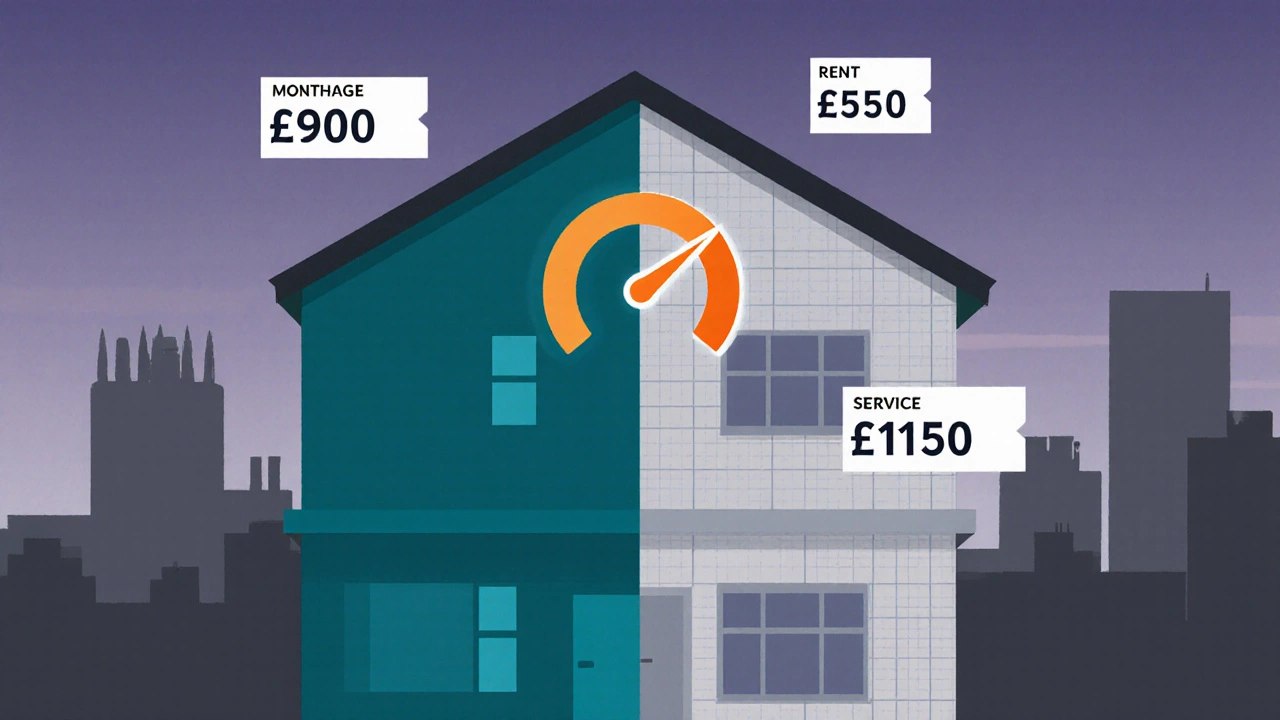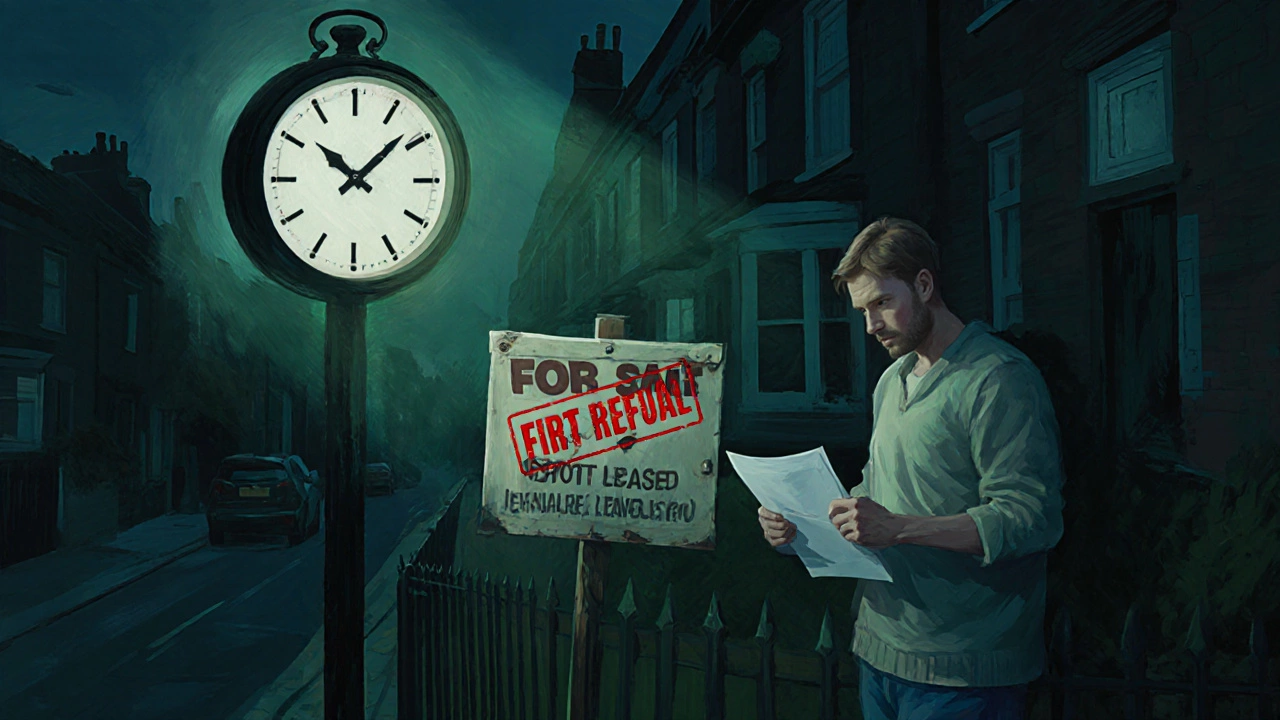Shared Ownership Cost Calculator
Calculate Your Shared Ownership Costs
Your Monthly Costs
£0.00Staircasing Costs
Leasehold Impact
Thinking about jumping into a shared ownership deal? It can feel like a sweet spot between renting and buying, but every option has its flip side. Below we break down the three biggest drawbacks you’ll run into, why they matter, and what you can do about them.
What is Shared Ownership?
Shared ownership is a government‑backed scheme that lets you buy a share of a property-usually between 25% and 75%-and rent the remaining share from a housing association. It was introduced in the early 2000s to help first‑time buyers get on the property ladder without needing a full mortgage.
Disadvantage #1: Ongoing Rent on the Unsold Share
Even after you’ve taken out a mortgage for your portion, you still pay rent on the part you don’t own. That rent is usually set at a market rate, which can rise each year. Over time, the combined cost of your mortgage payment, rent, and the service charge a fee covering building maintenance, insurance and communal area upkeep can creep higher than many expect.
For example, a buyer who purchases a 50% share on a £250,000 home might pay a £900 mortgage each month. If the rent on the other 50% is £550 and the service charge adds another £150, the total monthly outlay hits £1,600-almost double the mortgage alone.
Mitigation tip: ask the housing association for a clear rent‑review schedule and see if there’s a cap. Some schemes allow you to stair‑case (buy more of the share) faster, which can shrink the rent bill.
Disadvantage #2: Limited Equity Growth and Staircasing Costs
One of the biggest pulls of shared ownership is the promise of building equity as property values rise. In practice, your equity only grows on the share you own, and buying additional shares-known as staircasing the process of purchasing further percentages of the property-can be pricey.
When you decide to increase your stake, you’ll need a new mortgage valuation for the bigger share, plus stamp duty a tax on property purchases above a certain price. If the market has jumped, the stamp duty on the extra share can be a sizable lump sum.
Take a scenario where a buyer already owns 40% of a home valued at £300,000. A 10% staircasing would require paying for £30,000 of equity plus roughly £1,500 in stamp duty (assuming the current 5% rate). That extra cost can stall the whole plan.
Mitigation tip: keep an eye on market trends and budget for a staircasing window when values are steady, not soaring.

Disadvantage #3: Leasehold Restrictions and Resale Hurdles
Most shared ownership properties are leasehold, meaning you own the right to occupy the building for a set number of years-often 99 or 125. When the lease gets shorter, the property’s value can dip, and financing becomes trickier.
On top of that, housing associations may impose resale constraints: you often have to offer the share back to them first, or they might have the right of first refusal. That can delay a sale and limit your pool of buyers, potentially lowering the price you receive.
For instance, a homeowner with a 20‑year remaining lease may see the market value slashed by 10‑15% because lenders view the property as riskier. If they want to sell, the association’s right of first refusal can add another month or two to the process.
Mitigation tip: ask about lease extension options early, and factor any future extension costs into your long‑term budget.
Quick Comparison of the Three Disadvantages
| Disadvantage | Typical Impact | Potential Cost | Mitigation Strategy |
|---|---|---|---|
| Rent on Unsold Share | Higher monthly outlay than mortgage alone | £400‑£800 extra per month (varies by rent rate) | Negotiate rent cap; stair‑case sooner |
| Limited Equity & Staircasing Fees | Equity builds only on owned share; extra purchases costly | Stamp duty + new mortgage fees (≈5‑7% of added share) | Budget for staircasing window; monitor market |
| Leasehold Restrictions | Resale value drops as lease shortens; sale delays | Potential lease‑extension cost £1,000‑£3,000 | Check lease length early; plan extension |

Who Might Still Choose Shared Ownership?
If you’re a first‑time buyer with a modest deposit, the lower upfront cost can be a real door‑opener. The scheme works best when you plan to stay in the home for several years, give yourself time to stair‑case, and have a clear budget for extra fees.
Tips to Keep the Disadvantages in Check
- Run the numbers: add mortgage, rent, service charge, and projected staircasing costs before you sign.
- Ask the housing association for a written rent‑review schedule and any caps they offer.
- Check the lease length. If it’s under 90 years, ask about extension costs now.
- Set aside a contingency fund (about 5‑10% of the property price) for stamp duty and unexpected fees.
- Monitor the local property market. If prices are flat, it might be a good time to stair‑case.
Key Takeaways
- Rent on the unsold share adds a recurring cost that can push your monthly budget beyond expectations.
- Equity only grows on the portion you own, and buying more share brings stamp duty and new mortgage fees.
- Leasehold terms can limit resale value and make selling slower.
- Plan ahead: budget for extra fees, check lease lengths, and negotiate rent caps.
- Shared ownership still offers a pathway onto the property ladder if you manage the drawbacks wisely.
Can I rent out the part of the house I don’t own?
No. The housing association retains ownership of the unsold share, so you can’t sublet that portion. You can only rent the whole property if the lease permits subletting, which many shared‑ownership agreements forbid.
How often does the rent on the unsold share increase?
Rent reviews usually happen every 1‑3 years, depending on the agreement. The increase is tied to the local market rent index, so it can vary widely.
What is the typical cost of a lease extension?
For a 99‑year lease, extending by another 30‑40 years can cost between £1,000 and £3,000, plus legal fees. The exact amount depends on the remaining lease term and property value.
Is stamp duty payable each time I stair‑case?
Yes. Every time you purchase an additional share, you trigger a new stamp duty assessment on the amount you’re buying.
Can I switch from shared ownership to full ownership directly?
You can, but you must follow the staircasing process-buy the remaining shares in stages. Some buyers choose to buy the whole remaining share in one go if they have the funds and a favourable mortgage rate.
